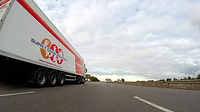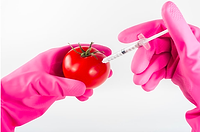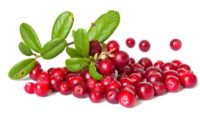The effort to be green—that is, reducing one’s overall impact on the environment—has of late gained increasing popularity, particularly in the commercial arena. Many companies have effectively restructured their corporate headquarters, recycle their paper goods and have reduced their use of all natural resources—not only because of legislation that requires it but because it makes good business sense. What’s more, increasing numbers of consumers are now carefully examining companies’ environmental records before deciding to do business with them.
The bottling industry is no different; in truth, there is tremendous pressure on bottling companies to be environmentally friendly. The prime movers are unquestionably the beverage segment, led by the bottled water industry, with the carbonated market close on its heels.
Still, maintaining a green profile is not easy. And in the bottling industry, it is particularly challenging. For example, recent legislation has banned the smaller sizes of water bottles in some cities in an attempt to reduce environmental waste. But regardless of the difficulty and expense involved, the insistence on achieving sustainability goes on unabated.
“The message that we’ve received from our customers is, ‘We want to use less material and less energy,’” said Mike Weaver, president and co-CEO at Standard-Knapp, a manufacturer of innovative packaging machinery. “Using less material has created a thing that the industry refers to as ‘lightweighting’ of the bottle, in which the weight of a typical PET bottle is driven down as far as possible.
“All the water bottles that our machinery works with started out at 18 grams of plastic; now they’re down to the 12-gram area. They’re less substantial, but they do have a positive impact on the sustainability front.”
Of course, there are very few industries where a major modification like decreasing the average weight of a bottle by one-third does not produce a ripple effect on downstream operations. In this case, the ripple effect encompasses the operation of bottling machinery that packages these products.
In virtually all packaging machines—tray packers and loaders, case packers, shrink wrappers and bottle packers—the bottles are moved along on a conveyor belt at a relatively high speed. In order to collect them up and organize them for packaging, the speed of the machine has to be decreased, which creates a condition called line pressure. It is a phenomenon that the industry has dealt with for quite awhile, but it has been exacerbated by the advent of the lighter weight bottles, which are far less tolerant of this pressure.
As each bottle pushes against an adjacent bottle, it becomes pressurized, which can produce one of two results. First, it can damage the shape, which is obviously undesirable for the end-user. Second, and more importantly, it can cause processing problems, as the bottles can become distorted in their shape. As a result, they’re harder to divide into lanes and harder to handle and meter.
“Think of round bottles that are collected up into a square pattern, like a case of bottled water, four wide by six deep,” said Weaver. “In between each of those bottles would be a star-shaped space. That star-shaped space is used to accurately meter the bottles with pins. If the bottles start to compress, the location of that star-shaped space will disappear or will be in the wrong spot.”
To combat this problem, Standard-Knapp offers a feature called Zero-Gap II Infeed technology for continuous low pressure product conveying. The Zero-Gap II creates smooth bottle laning, ensuring balanced lines and jam-resistant operation. Ultimately, it eliminates the line pressure at the beginning of a packing machine and allows the packaging machinery to do a better job of handling the bottles.
Installed between the upstream product conveyor and the original infeed of the machine, the Zero-Gap II Infeed distributes product from a nested pattern into multiple lanes. As these lanes fill and product accumulates in the low-pressure area, electronic population sensors signal the conveyor to increase its speed, maintaining balance. Each of these lanes continues to carry the product downstream where the lanes begin to narrow and line up with the machine’s individual lane guides. By monitoring the product lanes and controlling the conveyor speeds accordingly, the Zero-Gap II Infeed allows product to enter these lanes with very low pressure and no gaps.
“Certainly, this is something you’d like to have with rigid containers like glass or metal containers, but with these lightweight, compressible products it’s absolutely essential,” said Weaver.
The lightweight container world presents additional obstacles to the sustainability movement. There are many large polyethylene type bottles containing diverse products such as laundry detergent, fruit juice or milk. Those bottles are generally dropped into a corrugated case by a case packer. Sometimes, however, when the bottles land in the case and suddenly stops, significant hydraulic pressure is created by the liquid. In the new lightweight bottles, that shock can be sufficient enough to actually create holes. These holes typically happen in the bottom, or the foot, of the bottle.
Logically, the thickness of that minimum weak spot is going to dictate the weight of the entire bottle. So because of that one little weak spot, the entire bottle has to be heavier in order to provide enough material in that spot to withstand the shock. In other words, to achieve a stronger weak spot, more material must be used in the whole bottle.
Thankfully, there is an alternative: If the bottle can be handled more gently, less material can be used to make the whole bottle. To that end, Standard-Knapp offers a feature called “Soft Catch,” which allows users to reduce the shock energy by 80 percent over a conventional drop packer. Taking 80 percent of the shock energy away enables the use of thinner gauge bottles and thinner glass.
Another important directive in the sustainability push is to use less corrugated material in the shrink-wrapped trays that hold the bottled product. To achieve this objective, Standard-Knapp offers a U-board that effectively eliminates the end walls of the tray, thus using less material while offering more support than a pad. The recyclability and reusability of the U-board makes it extremely environmentally friendly. What’s more, in a conventional tray, the four sides are glued together with hot melt glue, yet another area of energy consumption. Since the U-board doesn’t use glue, energy—and the glue itself—are saved during the production process.
In terms of lowering energy consumption, Standard-Knapp has made significant progress in shrink-wrapping, an area of packing that has traditionally proven to be one of the greatest drains on energy usage.
“The metal chain pulling the cases goes into the tunnel at about 200 degrees and come out of the tunnel at 260 degrees,” Weaver explained. “So every inch of chain that goes through the tunnel increases in temperature by about 60 degrees, which means that on the return path it’s heating up the room. That turns out to be the single biggest energy user in a heat train tunnel because it’s taking the heat out of the tunnel.”
Standard-Knapp took a major step by replacing the metal chain circulating through the heat tunnel with a plastic conveyor belt, which significantly lowers energy consumption. “We’re still calculating the energy savings, but we already know it’s substantial,” Weaver contends.
While these advancements are clearly helping customers make major strides in the green campaign, Standard-Knapp has yet to declare, “Mission accomplished.” Not by a long shot.
“We’re always listening to our customers and looking for ways to meet the demand for new equipment that improves sustainability,” said Weaver. “To a certain extent, these technological breakthroughs sell themselves. They not only help companies become greener, they generate cost reductions in materials, labor and energy without sacrificing quality.”
In developing the formula to reach sustainability, Weaver cautions that cost-effectiveness should be an integral part of the equation.
“Being sustainable, by itself, is a worthwhile pursuit,” Weaver added. “But if it costs a company an arm and a leg to get there, it makes the effort far less attractive—and less achievable. Our goal is to help customers attain sustainability while justifying the payback on their investment.”
Weaver points out that his company puts its own money where its corporate mouth is.
“All of our machines are unpainted stainless steel,” he said. “That’s actually much greener than painting them.”
But don’t let their color fool you. Despite their silver hue, Standard-Knapp’s bottle packaging machines are about as green as they get.
For more information, visit standard-knapp.com.
Get our eMagazine delivered directly to your inbox
Stay in the know on the latest science-based solutions for food safety.
SUBSCRIBE TODAY!Copyright ©2024. All Rights Reserved BNP Media.
Design, CMS, Hosting & Web Development :: ePublishing



